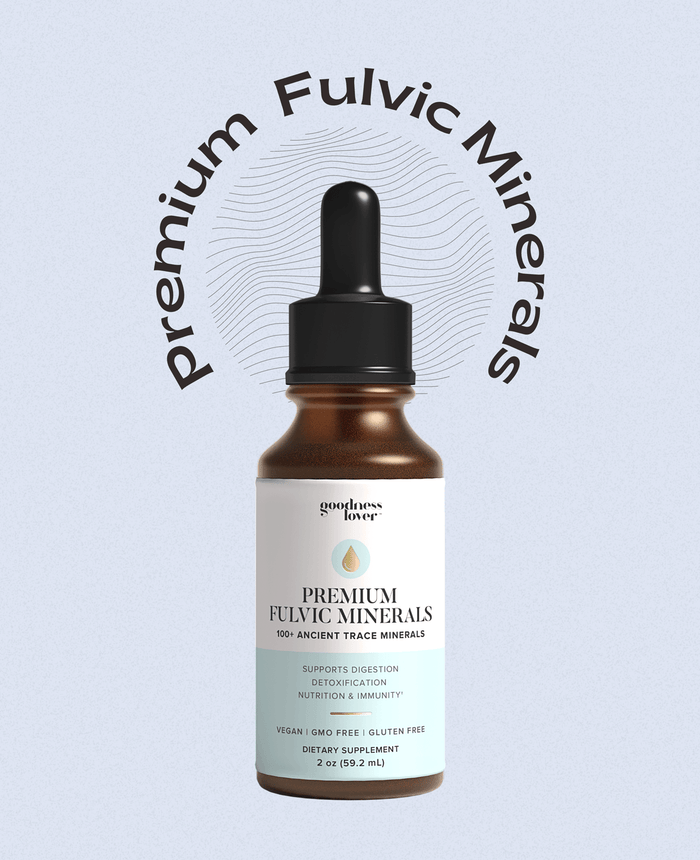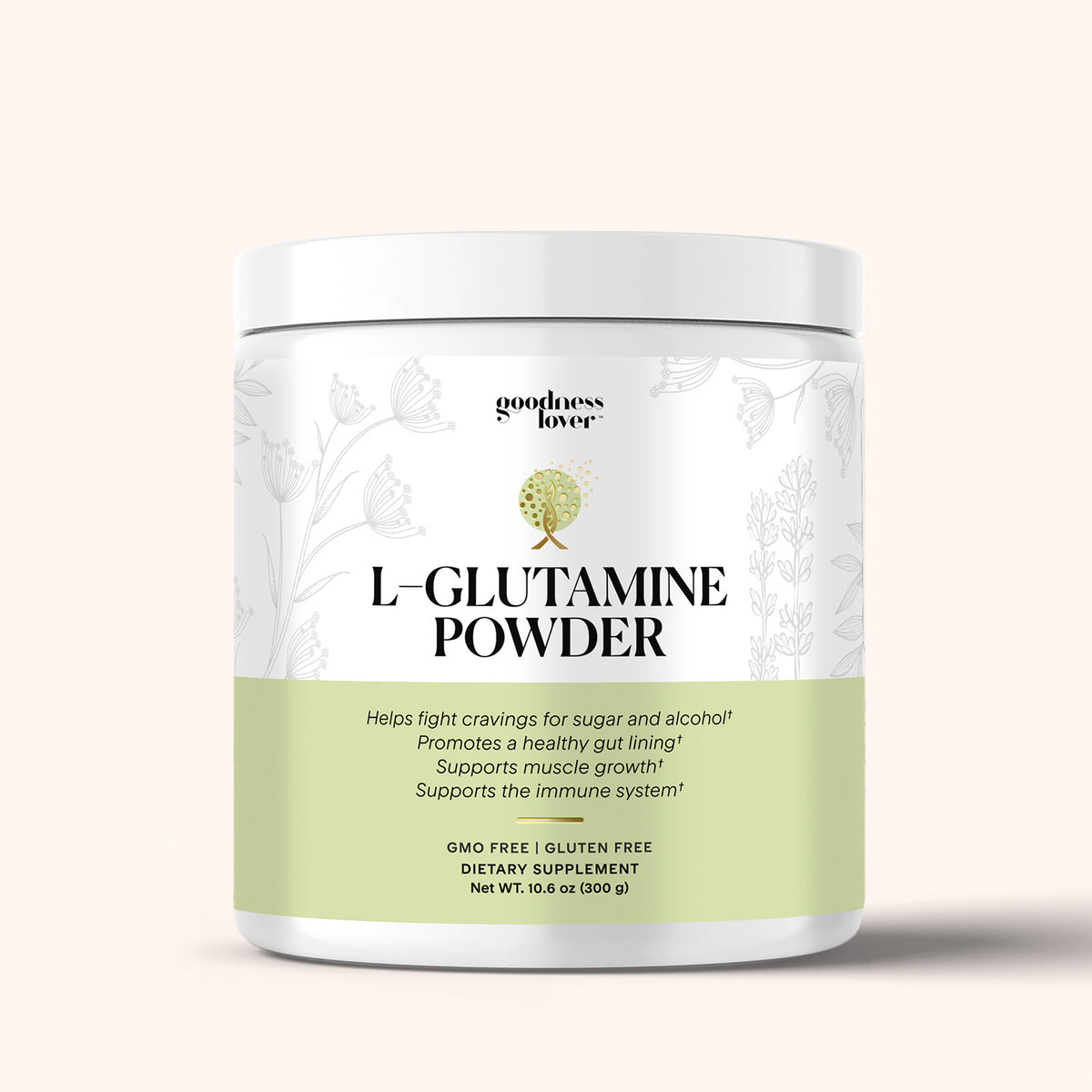Deep beneath the ocean's surface grows a category of food so nutritionally dense that it makes even our most celebrated superfoods look ordinary. We're talking about seaweed – those mysterious, flowing plants that most of us only encounter tangled around our feet while jumping in the waves or wrapped around our sushi rolls.
But while we've been frantically searching for nutritional solutions on land, the ocean has been cultivating a pharmacy of healing foods for thousands of years. These marine vegetables don't just survive in one of Earth's most challenging environments – they thrive, concentrating minerals and nutrients in ways that land-based vegetables simply can't match.
The Japanese have for a long time made sea vegetables a cornerstone of their diet - the average Japanese person consumes about 9 pounds (approx. 4 kilograms) of seaweed annually. With average lifespans that consistently rank among the world's highest, they might be onto something. Meanwhile, traditional Irish coastal communities called seaweed the poor man's vegetable – though there is nothing poor about its nutritional profile.
As we grapple with depleted soils, nutritional deficiencies, and the search for sustainable food sources, perhaps it's time we looked beyond our gardens and toward the vast, untapped potential of our oceans.
Table Of Contents:
What is Seaweed?
Seaweed isn't actually a weed at all, nor is it technically a plant. These are sophisticated marine algae – specifically macroalgae – that are more similar to mushrooms or lichen than terrestrial plants. Unlike land plants that draw nutrients from soil through roots, these plant-like organisms have no true roots or leaves and instead absorb minerals and nutrients directly from seawater through their entire surface. Just like land plants, they use photosynthesis to convert sunlight into energy, making them incredibly efficient at concentrating the ocean's bounty.
Since the mid-19th century, sea vegetables have been categorized by color: green, brown, or red – each offering unique flavors, textures, and nutritional profiles.
Common varieties you should know:
Nori – If you've ever eaten sushi, you've tasted nori. These paper-thin, dark sheets are made from dried, pressed red seaweed. With a naturally salty, umami flavor, nori is surprisingly rich in protein and packed with vitamins B12, A, and C, along with iodine, magnesium, calcium, iron, and potassium.
Kombu – Dubbed the "king of seaweeds," this brown sea vegetable is the secret behind dashi, the foundational soup stock of Japanese cuisine. Kombu is incredibly versatile – it can provide a crunchy, firm texture or become soft and pliable depending on preparation. Rich in calcium and containing more iodine than other seaweeds, kombu has an added bonus: it increases the digestibility of beans.
Wakame – You've likely encountered wakame in miso soup at Japanese restaurants. Sometimes called "sea mustard" for its resemblance to mustard greens when cooked, this tender seaweed has a mild flavor and slippery, almost squeaky texture when rehydrated. It's an excellent source of calcium, iron, riboflavin, folate, and magnesium.
Dulse – This reddish-purple seaweed has a unique claim to fame: when pan-fried, it tastes remarkably similar to bacon. Available in dried flake form, dulse can be sprinkled onto pasta, stir-fries, and casseroles, making it a favorite among plant-based eaters looking for that smoky, salty flavor.
Arame – More of a garnish than a main dish, this brown seaweed comes in long, thin strands with a slightly sweet flavor. High in fiber, calcium, iodine, iron, magnesium, and vitamin A, arame is typically sold shredded, cooked, and air-dried, ready to be reconstituted with water and added to salads or soups.

Nutritional Powerhouse Profile
Here's where seaweed truly shines – and where a little goes a very long way. These marine vegetables are so nutritionally dense that they're best thought of as nature's multivitamin. Seaweed is surprisingly rich in both protein and fiber, containing up to 47% protein by dry weight – more than many legumes – while also providing significant amounts of both soluble and insoluble fiber that support digestive health.
Iodine
Seaweed's most famous nutritional claim is its exceptional iodine content, which is crucial for thyroid function and metabolism. Just one sheet of nori provides around 11% of your daily iodine needs, while a single serving of kombu can provide up to 2,000 micrograms of iodine – over 1,300% of the daily value and nearly double the safe upper limit.
Minerals
Beyond iodine, you'll find significant amounts of calcium (often more bioavailable than dairy), magnesium for muscle and nerve function, iron for oxygen transport, sodium for fluid balance, and potassium for heart health. The mineral content can vary dramatically between species.
Vitamins
Perhaps most impressive is seaweed's vitamin profile, particularly for nutrients that are challenging to find in plant foods. Many varieties are excellent sources of vitamin B12 – a nutrient typically only found in animal products – making them invaluable for plant-based eaters. You'll also find folate, vitamin K, and surprisingly high levels of vitamins A and C.
Bioactive compounds
Seaweed also contains bioactive compounds that simply don't exist in land-based foods. Fucoidan, a complex carbohydrate found primarily in brown seaweeds like kombu, has shown promising anti-inflammatory, immune-supporting, and even anti-cancer properties in research studies. Alginate, another brown seaweed compound, may help with heavy metal detoxification. Additionally, the ocean environment has created unique marine-specific antioxidants in seaweed that offer protective benefits not found in terrestrial plants.
Omega-3 fatty acids
Certain marine algae can be processed into algal oil, providing the same EPA and DHA omega-3 fatty acids found in fish – but without the contamination concerns. This makes seaweed-derived omega-3s an excellent option for those avoiding fish or following plant-based diets.

Top Health Benefits of Seaweed
The impressive nutrient profile of seaweed translates into some remarkable health benefits that are difficult to find in any other single food source.
Thyroid health
Seaweed stands as the second richest source of iodine after iodized salt, making it invaluable for thyroid function and metabolic health. This is particularly important for those eating plant-based diets, as many healthy plant foods contain compounds that can interfere with iodine uptake. Small amounts of dulse, kelp, or wakame can help ensure your thyroid has the iodine it needs to regulate metabolism, energy levels, and hormone production. However, it’s important to note that too much iodine can also lead to thyroid dysfunction.
Heart health
The combination of fiber, antioxidants, and unique marine compounds in seaweed creates a powerful heart-protective package. Research shows these ocean vegetables can help lower blood pressure through compounds that promote blood vessel dilation, reduce harmful cholesterol levels, and provide potent antioxidant protection against the oxidative damage that leads to heart disease. The flavonoids in seaweed may also offer metabolic benefits that help combat obesity and atherosclerosis – two major risk factors for cardiovascular disease.
Bone health
Seaweed provides highly bioavailable calcium along with magnesium and other bone-supporting minerals. In Korea, new mothers traditionally consume seaweed soup (miyeok guk) during postpartum recovery, specifically to provide calcium for preventing bone loss, iron to prevent anemia, and other nutrients crucial for both mother and baby's health.
Digestive health
The unique polysaccharides, polyphenols, and fiber compounds in seaweed act as powerful prebiotics. Research indicates that these marine compounds can help maintain a healthy gut microbiome, which is foundational for preventing chronic diseases including diabetes, heart disease, and certain cancers. For those with digestive disorders or compromised gut health, seaweed's prebiotic properties can be particularly beneficial.
Cancer-fighting compounds
Seaweed contains an impressive array of bioactive compounds – including fucoidan, porphyran, carrageenan, and various polyphenols – that show promising anticancer properties. Studies have found these compounds can inhibit cancer cell growth, boost immunity, and promote cancer cell death, with particular benefits observed for breast and colorectal cancers.
Antiviral protection
Brown seaweeds contain sulfated polysaccharides (including compounds with names so long they're mercifully abbreviated to SQDGs) that demonstrate antiviral properties, particularly against herpes simplex viruses. These compounds work by preventing viruses from attaching to host cells, offering a natural layer of immune protection.
Environmental Benefits
Perhaps even more remarkable than seaweed's health benefits are its potential to address some of our planet's most pressing environmental challenges.
Here's a statistic that might blow your mind: coastal marine systems can absorb carbon at rates up to 50 times greater than terrestrial forests. Seaweeds globally sequester nearly 200 million tons of CO2 each year, with kelp leading the charge by growing over one foot per day. Australian scientist Tim Flannery estimates that if just nine percent of the ocean was covered with seaweed farms, it could absorb all human CO2 emissions. In regenerative ocean farming systems, harvesting kelp prevents the carbon sequestered in the plants from returning to the water when they decompose, creating a net carbon removal effect.
Seaweed farming essentially creates "oceanic reforestation." Over 95% of commercially available sea vegetables come from farms that are contributing to the restoration of underwater forests. Kelp farms help reduce ocean acidification by trapping carbon from seawater and producing oxygen, which may help alleviate the pH changes that threaten marine species survival.
Unlike land-based agriculture, seaweed farming requires no fresh water, no fertilizer, no pesticides, and no arable land. It's essentially the most resource-efficient food production system on the planet. Seaweed grows faster than any land-based crop, requires no inputs that compete with human food systems, and actually improves water quality as it grows.
Seaweed's environmental benefits extend beyond the ocean. Certain red seaweeds reduce methane emissions from cattle by up to 82% when added to their feed. Seaweed can also be converted into biofuels, offering a renewable energy source that doesn't compete with food crops or require agricultural land.
Like any agricultural system, seaweed farming isn't without potential concerns - poorly managed farms might compete with native species for light and nutrients, contribute to ocean pollution through equipment and plastic waste, or introduce invasive species to new areas. Wild harvesting also requires careful management, as over-foraging can damage ecosystems.
Safety Considerations
While seaweed offers impressive health benefits, it's important to understand that these ocean vegetables come with some legitimate safety considerations:
Iodine overload
This is both seaweed's greatest strength and its biggest caution flag. While iodine deficiency affects nearly 2 billion people worldwide, too much iodine can be just as problematic, potentially triggering thyroid dysfunction, hyperthyroidism, or autoimmune thyroid conditions.
The recommended daily intake of iodine is just 150 mcg for most adults, with an upper safe limit of 1,100 mcg per day. As already mentioned, a single tablespoon of dried kelp can contain up to 2,000 mcg of iodine – nearly double the safe upper limit. Cooking significantly reduces iodine content – boiling kombu for 15 minutes can eliminate up to 99% of its iodine, though much of that iodine ends up in the cooking water.
Heavy metal contamination
Unfortunately, seaweed's ability to concentrate nutrients from seawater also means it can concentrate contaminants. Arsenic is the biggest concern, with one variety – hijiki – containing such high levels that it's no longer recommended for consumption. Other seaweed varieties may contain trace amounts of arsenic, cadmium, copper, manganese, nickel, and even mercury.
Medication interactions
Seaweed's high iodine content can interfere with thyroid medications, making it crucial for anyone on thyroid drugs to consult their healthcare provider before adding seaweed to their diet. Additionally, seaweed is high in vitamin K, which can be problematic for people taking anticoagulant medications like Warfarin.
Sodium content
Many seaweed varieties are naturally high in sodium – sometimes extremely high. For those with hypertension, kidney disease, or heart conditions, this sodium content can be particularly problematic.
How to Incorporate Seaweed into Your Diet
Ready to dive into the world of seaweed but not sure where to start? Don't worry – you don't need to transform into a sea creature overnight.
Beginner-friendly options:
- Nori snacks – Start with the gateway seaweed: roasted nori sheets. These come in convenient snack-sized packages and taste like crispy, salty chips with a hint of ocean flavor.
- Seasoning sprinkles – Dulse flakes are your secret weapon for adding umami depth to familiar foods. Shake them onto stir-fries, pasta, soups, or even popcorn.
- Smoothie boost – Add a small amount of kelp powder to your morning smoothie. The fruit flavors will mask any "seaweed-y" taste while you get all the nutritional benefits.
Cooking methods
Soup enhancement – Kombu is the backbone of traditional Japanese dashi broth, but you can add it to any soup for extra minerals and umami depth. Simply add a strip to your pot while cooking, then remove it before serving.
Bean preparation – Adding kombu to bean cooking water provides enzymatic support that helps break down the compounds that cause gas, making your beans more digestible.
Salad transformation – Rehydrate wakame by soaking it in water for 5-10 minutes, then toss it with sesame oil, rice vinegar, and cucumber for a refreshing seaweed salad.

Supplementation
If eating seaweed directly feels too adventurous, you can still reap the benefits through supplements:
- Kelp tablets – Provide concentrated iodine and minerals in precise, measured doses
- Spirulina powder – While technically a freshwater algae, it offers similar nutritional benefits
- Algal oil – Delivers omega-3 fatty acids EPA and DHA without the fishy taste or contamination concerns
Where to Purchase
Unless you live near the ocean with local harvesting opportunities, fresh seaweed can be challenging to find. Dried and packaged is your most practical option. Look for organic brands that use third-party testing for heavy metals. Asian markets often have the best selection and prices, while health food stores typically carry higher-end, tested varieties. Many reputable suppliers offer high-quality seaweed products online, often with detailed information about sourcing and testing.
Why Seaweed Deserves a Place in Modern Diets
As we've explored the remarkable world of seaweed, one thing becomes crystal clear: these ocean vegetables aren't just another health trend – they're a game-changing solution to some of our biggest nutritional and environmental challenges. From delivering hard-to-find nutrients like iodine and B12 to supporting food systems that actually heal our oceans while feeding us, seaweed offers something truly special.
You don't need to become a sea creature overnight or completely overhaul your diet. The beauty of seaweed lies in how easy it is to start, and even tiny amounts provide significant nutritional benefits!
What makes seaweed so significant goes beyond nutrition. It shows us that some of our biggest problems might already have simple, natural solutions. The ocean has been offering us this incredible resource all along – we're just finally catching up.
All linked products have been personally selected by a member of the Goodness Lover team. If you purchase any of these items, Goodness Lover may earn a commission.














What Do You Think? Comment Below: